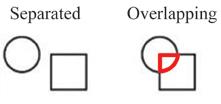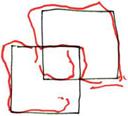Every day we see objects, new and familiar. Amazingly, we recognize them instantly.
How? How does our brain turn what our eyes see into the images we recognize?
This is an important question as answering it may ultimately influence the way doctors treat patients with vision problems.
Nonetheless finding answers has been difficult. Learning to recognize objects begins as soon as we open our eyes after birth. So we can’t recall how we learned to recognize objects, and infants are too young to communicate what they’re seeing. Thus most attempts to find answers have been limited to indirect animal studies or studies on the rare blind person who gained sight later in life.
Now, Project Prakash provides a unique opportunity to directly address the question. Project Prakash gives sight to children in India who have treatable blindness, usually from congenital cataracts and other reversible eye conditions. These children are old enough to describe what they see, allowing Dr. Pawan Sinha, Ph.D., a researcher at the Massachusetts Institute of Technology’s Department of Brain and Cognitive Sciences, and his colleagues to study human visual development, object recognition, and other difficult topics.
Some results have strengthened previous ideas about how our brains work whereas others modified them. Either way, all of these studies will help change the way we think about vision and blindness for a long time.
Can we learn to see things after a certain age?
Currently, it is thought that our brains can only learn to recognize objects during the first few years of life. It takes almost 15 years for our vision and our ability to recognize objects to fully mature. The most critical changes appear to occur during our first six years. Seeing during this period helps teach our brains to recognize objects and any problems with vision during this time is thought to prevent learning. Similarly, it is thought that anyone who is blind during this time will not learn to recognize objects if they gain sight later in life.
This idea of a developmental critical period is largely based on animal studies performed during the 1960s. It’s an influential idea which many researchers use as a basis to design and interpret experiments and many doctors use to make treatment decisions.
Nonetheless, there have been a few rare cases of blind patients who gained sight later in life and learned to recognize some objects. Furthermore, children born blind with cataracts but who had gained sight from surgery a few months after birth eventually learned to recognize most objects. These cases suggest that our brains may be able to learn to see regardless of whether we have vision problems during the critical period.
Every child Project Prakash treats provides one more reason to think that the brain is more flexible than we once thought. So far, the project has treated 200 children, many of whom are older than six years of age. Nine of the children have been described in scientific journal articles. The average age of these children was 13 years old, ranging from 7 to 24. Here are just a few.

Although they do not have perfect vision, all of them have learned to recognize most objects and can rely on their vision to work and play like people who grew up with normal vision. These results support the idea that our brains can learn to recognize objects after the critical period.
Moreover the results may change eye care, especially in countries like India that have many children with treatable blindness. Because of the critical period idea, doctors in India often think performing surgery on patients with treatable blindness that are older than 6 years of age is futile. The growing evidence coming from Project Prakash contradict this view, suggesting that doctors have less reason to give up hope on treating these children.
How do we learn to recognize things?
Recognizing objects is an amazing process our brains constantly perform. Take this photograph for example (see left-hand picture below).

Here are a couple of girls dancing in front of a bag-pipe player. The photo is filled with a variety of colors and light levels detected by our eyes. Some of this information has been transformed into the grey-lined picture in the middle to approximate the immense amount of visual information contained in the photograph. As we look at the photograph, our brains remarkably take this confusing information about color and light and assign it to the people and objects outlined in the right-hand picture. How does this work? Do the children of Project Prakash see the same objects we see immediately after their vision is corrected?
To test this idea, Dr. Sinha and his colleagues displayed a variety of simple objects on a computer screen to three Project Prakash subjects who had recently gained sight from treatment. The tests revealed that the subjects had problems recognizing objects within the first three months after treatment.
For instance, the subjects could recognize individual objects, like a triangle or a circle when they were separated (see picture below).

But when the objects overlapped the subjects would often get confused and mistake the overlapping area as a third object (highlighted in red).

The drawing above demonstrates what one subject saw. Here a subject traced (drawn in red) over a drawing of two overlapping rectangles (drawn in black). Notice that the subject drew separate rather than continuous lines. The tracing suggested that the subject’s brain was having a difficult time deciding whether the lines were part of each rectangle.

Interestingly, motion appeared to help the subjects attribute lines to objects. For example, subjects had difficulty recognizing a stationary triangle displayed among scattered lines (see picture above). However, they were able to recognize it more often if the triangle constantly moved, suggesting that motion was important for learning to discriminate among objects.
The importance of motion was also strengthened by measuring the type of objects the subjects had learned to recognize within the first three months of gaining sight. Subjects were shown 50 everyday objects. On average, they only recognized 13 objects but many of the objects they recognized, such as a car, normally move whereas the ones they did not recognize, such as a rotary telephone, are usually stationary.
Ten to eighteen months after gaining sight the subjects were re-shown the same variety of simple objects they were tested with before. This time they performed much better, indicating that their brains eventually learned how to identify objects they once could not recognize. Dr. Sinha’s results support previous studies suggesting that motion facilitates object recognition.
Do our senses overlap?
On July 7th, 1688 the Irish philosopher William Molyneux sent John Locke a letter basically asking whether a blind person would visually recognize objects they learned to identify by touch immediately after gaining sight.
“A Man, being born blind, and having a Globe and a Cube, nigh of the same bignes, Committed into his Hands, and being taught or Told, which is Called the Globe, and which the Cube, so as easily to distinguish them by his Touch or Feeling; Then both being taken from Him, and Laid on a Table, Let us Suppose his Sight Restored to Him; Whether he Could, by his Sight, and before he touch them, know which is the Globe and which the Cube? Or Whether he Could know by his Sight, before he stretch’d out his Hand, whether he Could not Reach them, tho they were Removed 20 or 1000 feet from Him?” - Stanford Encyclopedia of Philosophy
If the answer is “yes” then it would mean that we have innate knowledge of objects or, at least, that our senses share knowledge of objects whereas a “no” answer would suggest that our senses learn how to identify objects independently through experience. Answering this question has been difficult because there have been only a few reported cases of blind people who gained sight later in life.
Recently, Dr. Sinha and Richard Held, a colleague at MIT tried to answer the question by testing subjects from Project Prakash. First, the subjects were asked, within 48 hours of gaining sight from surgery, to familiarize themselves with an object by either exclusively touching it or looking at it (See above). Then their ability to recognize the object was tested by asking them to identify it when it was presented next to an object that has a similar shape. Subjects who used the same senses in Steps 1 and 2 almost always correctly identified the object, demonstrating that they could learn to recognize the objects using either sight or touch.
However subjects who used touch in Step 1 could not easily recognize the object by looking at it in Step 2. They would only correctly identify the object about half the time, indicating that they were basically guessing the identity of the object they were seeing. This result suggested the answer to Molyneux’s question is no, our senses do not share an innate knowledge of objects. The information the subjects obtained about an object by touch was not used by the part of the brain that receives visual information.
Nevertheless, when some of the subjects were re-tested at least 5 days later they performed much better. This time, subjects who used touch in Step 1 correctly recognized objects 80% of the time they were asked to look at objects in Step 2. The change in performance suggested that the subjects’ brains needed less than a week of seeing to start sharing information about how an object looked and felt. These results suggest that our different senses may quickly teach our brains to share information, in agreement with previous reports. In conclusion, the answer to Molyneux’s question is no, our senses do not share information until they are activated. Once activated then they rapidly learn to share.
By Christopher G. Thomas, Ph.D.
Publication citations:
Ostrovsky Y et al. “Vision Following Extended Congenital Blindness.” Psychol Sci, December 2006, vol. 17(12), pp. 1009-1014.
Ostrovsky Y et al. “Vision Parsing After Recovery From Blindness.” Psychol Sci, December 2009, vol. 20(12), pp. 1484-1491.
Held R et al. “The newly sighted fail to match seen with felt.” Nat Neurosci, May 2005, vol. 14(5), pp. 551-553.